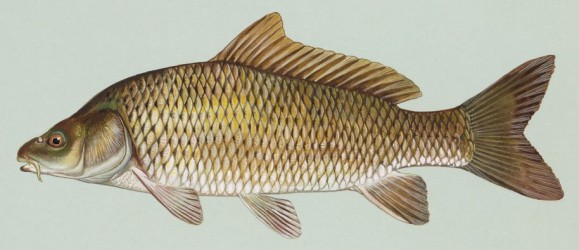Rivers and lakes have long been important for Manitoba. They are a source of food, they generate our electricity, and at one time they were important transportation routes. They are also centres of leisure. All these things affect, and are in turn affected by, the delicate ecosystems of our waterways. And these ecosystems are threatened by invasive species.
According to the Invasive Species Council of Manitoba, invasive species are “plants, animals, or other organisms that are growing out of their country or region of origin and are outcompeting or even replacing native organisms.” When a species travels to a new environment, it could find that environment inhospitable and fail to take root there. But if it can handle the new environment, the invasive species might find that it is not susceptible to the local predators and diseases. This gives it a great advantage over local species.
Of course, the system has a way of shifting to accommodate the change, but in nature these changes take place gradually. Without human intervention, a species is not going to be abruptly introduced to a new area on the other side of the planet. But when you throw humanity into the equation, with all our planes, trains, automobiles, and global shipping, these changes can occur faster than ever and lead to ecosystems that are radically out of balance. Invasive species are what you get when evolution meets our industrialized, globalized human society.
By beating out native species, invasive species reduce biodiversity and destroy unique ecosystems. They can also impact agriculture (as with weeds that compete with crops and can be costly to deal with) and the flow and quality of water. These factors are all of particular concern in Manitoba.
Invasive species usually travel to new areas as a result of human activity. Sometimes this can be the result of illegal activity such as the smuggling of fruits and vegetables, which can introduce invasive plants as well as insects and parasites, or obviously irresponsible activities like the purchase of certain exotic animals – the Everglades in Florida are being rapidly overrun with Burmese pythons that were introduced by the exotic reptile trade. But even the everyday work of fishermen can, if they are not careful, transfer invasive pests from one area to another.

Sometimes they are introduced on purpose for purely ornamental purposes. The common carp (featured above) was brought to North America for this reason, and it reached Manitoba around 1886. By 1954 it had disrupted commercial fisheries. When the common carp feeds, it stirs up the substrate (bed of the stream), making the water cloudy. This destroys habitats and kills plants, and can make the water unsuitable for drinking or swimming. It can also release phosphorus, which is a nutrient normally locked up at the bottom of the stream, contributing to the eutrophication (nutrient loading) of lakes.
Before 1940, the common carp was only found in the Red River. By 1950, it had become established in the south basins of lakes Winnipeg and Manitoba. Over the next twenty years it expanded rapidly, and by 1976 it was found in almost all major lakes and rivers in Manitoba except the Churchill River system. In the last 16 years, the common carp invaded the Churchill River system. Its expansion in the north was made possible by hydroelectric development – especially the construction of Kettle Generating Station in 1974 and the Churchill River Diversion in 1976. This development flooded what had been dry land, and provided shallow marshy areas for the carp to spawn in the summer.
There’s another carp that’s even more concerning: the Asian carp. It has not yet reached Manitoba, but there is a serious danger that it will invade the Great Lakes. Canadian and American fisheries officials are working to keep it out, but it has been spotted just six miles from Lake Michigan. This is particularly troubling, as Lake Michigan “opens the door” to Lake Huron and the rest of the Great Lakes
The Asian carp can have devastating effects on biodiversity. The fish can grow to about a metre in length and up to 45 kilograms. They eat voraciously, outcompeting and starving out other fish and dominating the ecosystems they invade. One variety, the silver carp, is dangerous in an especially dramatic way: when startled, they launch themselves from the water in great numbers and with considerable force. People have had bones broken by silver carp.
The Asian carp escaped into the Mississippi River from U.S. aquaculture facilities in the 1990s. It has been advancing steadily northward since that time, and is now perilously close to the Great Lakes. “Nine out of 10 fishes pulled out of the Mississippi River basin are now Asian carps,” said Becky Cudmore, manager of the Centre of Expertise for Aquatic Risk Assessment (CEARA) of Fisheries and Oceans Canada. Computer modelling by CEARA suggests that the Asian carp would have no trouble adapting to most Canadian environments.
It’s not just fish that are dangerous invaders. The spiny waterflea, an aquatic invertebrate and zooplankter native to Europe, can be found in Lake of the Woods and the Winnipeg River and is making inroads into Lake Winnipeg. They are capable of reaching 15mm in size, which is large in zooplankton terms. Unlike other waterfleas, which mostly feed on algae, the spiny waterflea preys on other zooplankters. The long, barbed tail spine can get stuck in fishing gear, which is a potential method for the spiny waterflea to invade new lakes.
The spiny waterflea can reproduce sexually or by parthenogenesis (i.e., asexual reproduction). This allows them to reproduce very quickly. Also, because it preys on zooplankters, it competes directly with small fish for food. Because of its rapid reproduction, the spiny waterflea can hog all the food, leaving little for the small, young fish.
According to an article published by the Michigan Sea Grant, the spiny waterflea has become a permanent part of the ecosystem in the Great Lakes. And Brenda Hann, a University of Manitoba scientist who studies the spiny waterflea, says, “Once a non-indigenous species has invaded a new habitat, it is almost impossible to eradicate. Prevention is vital, but as non-indigenous aquatic species move along waterways, it is a matter of ‘when,’ not ‘if’ they invade if the waterways are connected.”
In many cases, the invasive species have already arrived and there’s not much we can do other than track their advance. At some point you have to accept that the invaders have succeeded, and they’re now a local species. When you talk about invasive species, heavy questions about the way we relate to nature lurk just below the surface. All the same, though, it would be better if the Asian carp did not reach Manitoba.




